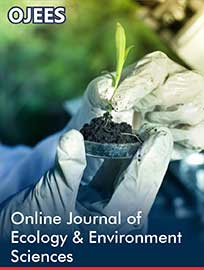 Research Article
Research Article
Assessing Wildfire Risk in the Wildland-Urban Interface: A Fire Prone Landscapes Approach
William E Schlosser*
Environmental Scientist & Regional Planner, D&D Larix, LLC, USA
William E. Schlosser, Environmental Scientist & Regional Planner, D&D Larix, LLC, USA. Email: Schlosser@Resource-Analysis.com
Received Date: July 19, 2023; Published Date: July 31, 2023
Abstract
Wildfires in fire-prone landscapes pose significant threats to human communities and natural ecosystems, particularly in the Wildland-Urban Interface (WUI). To address these challenges, this study presents the Fire Prone Landscapes (FPL) approach, a geospatial analytical tool designed to assess wildfire risk within the WUI. The FPL analysis integrates key factors, including the Historic Fire Regime (HFR), Mean Fire Return Interval (MFRI), and Fire Regime Condition Class (FRCC), while emphasizing the unique risks faced by human populations in fire-prone environments.
The FPL approach builds upon the work of federal land management agencies and leverages geospatial data to quantify relative risk factors across large geographical regions. By considering vegetation cover, canopy closure, aspect, slope, and topographic position, the FPL analysis identifies areas where high population density intersects with heightened vulnerability to wildfire events.
Unlike traditional ecological assessments, the FPL analysis prioritizes the protection of human lives, structures, and infrastructure within the WUI. It provides valuable insights into areas where resources are potentially at risk of wildfire losses, enabling the prioritization of community protection measures and the enhancement of WUI home defensibility.
In this manuscript, we detail the methodology and application of the FPL approach, focusing on the Coeur d’Alene Indian Reservation and surrounding areas in Idaho, USA. We describe the data sources utilized, including remotely sensed images, digital elevation models, and past fire extents. The results of the FPL analysis demonstrate the spatial distribution of wildfire risk within the study area and highlight areas with elevated probabilities of wildfire occurrence.
These findings underscore the importance of mitigating wildfire fuel loads within the WUI to protect lives and preserve cultural values. The FPL approach serves as a valuable tool for assessing and managing wildfire risk in fire-prone environments, offering insights that can inform wildfire prevention, preparedness, and response strategies. By addressing the specific challenges of the WUI, the FPL approach contributes to the long-term viability and resilience of both human communities and natural ecosystems.
Keywords:Wildfire risk assessment; Fire prone landscapes; Wildland urban interface; Historic fire regime; Mean fire return interval; Fire regime condition class; Community protection; Home defensibility
Abbreviations:AGWA: Automated Geospatial Watershed Assessment; DEM: Digital Elevation Models; FPL: Fire Prone Landscapes; FRCC: Fire Regime Condition Class; GIS: Geographic Information System; GLS: Geographical Least Squares; HFR: Historic Fire Regime; IDL: Idaho Department of Lands; MFRI: Mean Fire Return Interval; NBR: Nominal Burn Ratio; NFPCS: Northern Fire Plan Cohesive Strategy Team; OLI: Operational Land Imager; PRISM: Parameter-Elevation Relationships on Independent Slopes Model; SWAT: Soil and Water Assessment Tool; USFS: US Forest Service; WUI: Wildland-Urban Interface
-
William E Schlosser*. Assessing Wildfire Risk in the Wildland-Urban Interface: A Fire Prone Landscapes Approach. Online J Ecol Environ Sci. 1(2): 2023. OJEES.MS.ID.000510.





